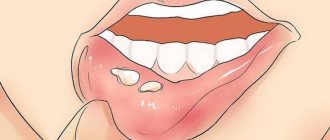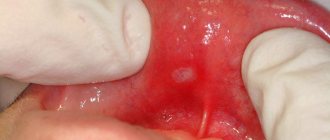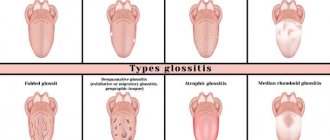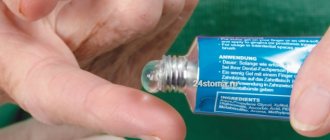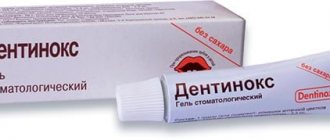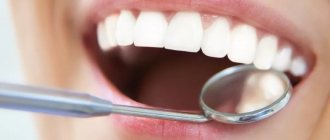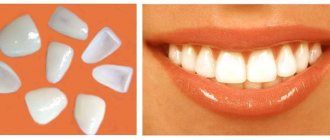Nutrition for periodontal disease should be healthy, varied and nutritious. With proper nutrition, the disease will not worsen, and acute periods will not recur, the gums will be healthy and strong.
Periodontal disease is a systemic disease of the periodontal tissues. The problem provokes bleeding, gradual resorption of bone tissue, the teeth become mobile and fall out over time. In order to prevent complete loss of teeth, it is necessary to modernly treat periodontal disease, and then follow the principles of proper nutrition.
Diet for periodontal disease
The main goal of a diet for periodontal disease is to saturate the body with vitamins and minerals that would help strengthen the gum tissue. The diet should include special foods:
- Solid food
It is solid foods that provide the so-called natural training of gums and teeth. But here you need to stick to the “golden mean”, that is, eat solid foods in moderation: apples, carrots, cucumbers, meat. You should avoid nuts and too hard grains.
But in case of acute periodontal disease, hard foods should be avoided, as they damage soft tissues and cause continuous bleeding of the gums. Include pureed foods and more liquid dishes in your diet.
- Dairy and fermented milk products
“Milk” is enriched with calcium, which is important for the formation of healthy gums and teeth. And fermented milk products activate the gastrointestinal tract, saturate the body with useful substances that are necessary for natural tissue regeneration. Kefir, fermented baked milk, yoghurts, cheese, cottage cheese, sour cream must be included in the daily diet. But you should avoid sugar; you can add a little honey instead.
- Citrus
They contain a large amount of vitamin C. Oranges, lemons, grapefruit, tangerines are welcome. Drink tea with lemon, which also has a tonic effect.
A diet for periodontal disease involves saturating the diet with fruits, vegetables, and dairy products. For protein, seafood, fish, and lean meats are recommended. Everything that is heavy and difficult for the body to digest should be excluded, including alcoholic and low-alcohol drinks.
Drinks recommended for periodontal disease:
- mineral water without gas (minimum 1.5 liters per day);
- weak green tea;
- compote of their fresh fruits or dried fruits;
- yoghurts;
- uzvar;
- jelly.
Recipes
You can prepare effective remedies for oral inflammation and pain at home. Recipes with aloe vera are often prescribed by specialists in combination with therapeutic therapy. The use of agave stops the proliferation of pathogenic microflora, restores microcirculation of the oral mucosa and the flow of nutrients. According to the instructions, before using medicinal products, you need to perform oral hygiene procedures and brush your teeth thoroughly. Plan your next meal no earlier than 40 minutes later.
We recommend: Aloe for psoriasis - folk recipes
Aloe tincture
In folk medicine, aloe leaf is widely used for cysts. It has disinfectant and anesthetic properties, helps relieve inflammation, and relieves pain.
Components:
- 5 aloe leaves;
- 150 ml alcohol.
Peel the leaves, cut into small slices and pour in alcohol. Place the resulting mass in a glass container and leave to infuse in a dark place for 3-5 days. Then dilute with water - take a teaspoon of tincture for half a glass of boiled water. Rinse with the remedy 6-8 times a day until the condition is restored. You can apply the leaf to the affected area after every meal.
Aloe juice
The benefits of aloe juice are used for inflammation of the gums, stomatitis accompanied by pain, redness, and swelling of the mucous membrane. Active plant components promote tissue regeneration and have an antibacterial effect. It is recommended to be used for preventive purposes in case of decreased immunity after taking antibiotics. In acute conditions, you can apply aloe to the gums for several hours until improvement occurs.
Components:
- 20 ml aloe juice;
- 10 g sage;
- 200 ml water.
Wash the leaves, wrap them in parchment, and put them in the refrigerator for a day. After cutting off the skin, squeeze out the juice using gauze. Pour water over the sage and place in a water bath for 15 minutes. Then let cool and strain. Combine the plant juice with the decoction, divide the entire volume into 5-6 rinses after each meal. Use the prescription for 2 weeks; if symptoms persist, consult a doctor.
Aloe gel
In case of periodontal disease, it is effective to use agave to quickly restore periodontal tissue. Treatment of gums at home is carried out in the initial stages; numerous reviews confirm the positive effect. If the condition worsens, an adult should contact a dentist to prescribe additional medication or procedures.
Components:
- 20 g aloe gel;
- 2 drops of peppermint essential oil.
We recommend: Aloe for lung diseases - folk recipes
Cut off the leaves of the plant, peel the skin, and grind the pulp in a blender. Measure out the required amount of gel and mix with mint oil. It is recommended to treat the affected areas 3-5 times a day; it is recommended to treat the gums for 2-3 months, monitoring the effectiveness with a dentist.
Compress
When flux occurs, an abscess forms on the gum; this is a dangerous condition that requires immediate treatment; in folk medicine, aloe with celandine is used. In the initial stages, if a sheet is applied to the gums, inflammation and pain quickly disappear. But when the cheek tumor grows, an effective recipe is used.
Components:
- 20 g celandine;
- 20 gr. aloe.
Wash the celandine and aloe, dry and grind in a meat grinder. Wrap the finished paste in gauze, apply to the affected area 2-3 times a day, keep for at least 40 minutes. It is effective to combine with aloe decoction rinses.
What vitamins should I take if I have periodontal disease?
To combat gum damage, it is necessary to saturate the body with vitamins. Here are the most important groups:
- Vitamin A - helps restore the epithelium, activates regeneration processes. A large amount of vitamin A is found in broccoli, carrots, pumpkin, blueberries, black currants, apricots, spinach, and liver.
- Vitamin E – is directly involved in the metabolic processes of the body. It is found in corn, vegetable oil, and rose hips.
- Vitamin K – takes part in blood clotting processes. Contained in spinach, parsley, cilantro, dill, cauliflower, green tomatoes. It is very important if it is necessary to prevent bleeding gums - a clear and first sign of periodontal disease.
- Vitamin B6 – helps strengthen blood vessels, improves mineral metabolism in the jaw bones. Contained in yeast, grains, legumes.
Along with healthy foods that contain vital vitamins, dentists recommend taking vitamin complexes - a ready-made set of useful components that will help prevent the development of periodontal disease and significantly improve health.
Contraindications
Treatment with traditional methods requires precautions. Side effects occur with an overdose; if more than 300 mg of agave is ingested, diarrhea is observed. There are a number of contraindications for treating gums with aloe:
- individual intolerance;
- taking diuretics;
- during pregnancy.
We recommend: Aloe for gastritis - healthy recipes with aloe
If your gums are bleeding or painful, you should consult a dentist. After identifying the cause of the pathological process, the specialist will prescribe the optimal treatment. In case of accumulation of bacteria, stone formation, inflammation, agave will only reduce discomfort.
The doctor will prescribe complex therapy, in addition to procedures and medications, aloe is also used. At home, when symptoms increase, you should not get carried away with self-medication, which can only aggravate the condition and provoke a severe course of the disease.
Minerals for periodontal disease
In addition to vitamins, gums and teeth need the following minerals:
- calcium;
- zinc;
- copper;
- iron;
- selenium.
Calcium is a “building element” for teeth and gums. Traditionally, calcium is found in milk, cheeses, yogurt, and sour cream.
Zinc takes part in the regenerative processes of bone tissue. Contained in legumes, beef, lentils, seafood.
Copper is necessary for healthy hematopoiesis, as well as the strengthening of iron in the body. High copper content is found in bread, potatoes, and liver. To ensure copper is absorbed better, it is recommended to include fermented milk products in your diet.
Iron helps enrich the body with oxygen. It is found in buckwheat, liver, beans, and beef.
Selenium is found in foods such as beans, peas, lentils, broccoli, barley, and nuts.
How problems with teeth and gums arise “unnoticed”, how to recognize their symptoms in time
So, you have several fillings in your mouth and you consider yourself healthy, but this morning while brushing your teeth there were traces of blood on your brush. You looked into your mouth, of course, you didn’t see anything, and you didn’t see a doctor. But in vain: you have the first signs of gum inflammation (chronic catarrhal gingivitis). However, time does not stand still and the disease, which has gradually made itself known, progresses unnoticed by you. Now, when brushing your teeth, you notice obvious bleeding from your gums, you have an unpleasant odor from your mouth, and from time to time you feel aching and itching in your gums, so much so that you want to “grit your teeth.” You look into your mouth... Yes, the papillae between your teeth have become suspiciously red and swollen. But again you don’t go to the doctor. And soon you discover that your teeth have somehow grown strangely. It becomes more and more difficult to bite the side of a rosy apple. You have become silent, so as not to breathe in the cold frosty air, you refuse drinks with ice and lemon, because cold and sour things are starting to make your teeth ache desperately. You're about to go to the doctor, but there's something more important going on. And finally, that same tomorrow comes when, while brushing your teeth, you spat out a very nice-looking, completely healthy tooth. How's the outlook? What needs to be done? Of course, take care of your oral cavity regularly, twice a day. Remember that hygiene is the basis of prevention, and prevention is always easier than cure!
Not recommended products for periodontal disease
- sweets (sweets, chocolate, desserts, cakes, cookies) – it contributes to the destruction of hard and soft tissues of the oral cavity;
If you have periodontal disease, you should not eat viscous sweets (marshmallow, caramel, toffee), which stick to the tooth enamel, and the remains of such food are difficult to clean out with a brush. Such products provoke the formation of plaque and carious lesions.
- flour (buns, cookies, white bread) - these products are better replaced with bread, products made from wholemeal flour;
- fast food, soda, chips, crackers - foods that are poorly digested create problems in the gastrointestinal tract, which definitely affects the condition of the teeth;
- black tea and coffee - they negatively affect the condition of tooth enamel and soft tissues.
Treatment of children
The healing properties of aloe are used to care for the oral cavity of children after 6 years of age. A large amount of sweets and poor hygiene can lead to the development of not only caries, but also periodontitis. It is important for a school-age child to learn how to take care of their dental health on their own.
Components:
- 50 ml chamomile decoction;
- 5 ml aloe juice.
Pour a teaspoon of chamomile flowers into a glass of boiled water and place in a water bath for 15 minutes. After the broth has cooled, strain and mix with aloe juice. Stir well, rinse your mouth with the prepared product 3 times a day, make sure that the child does not swallow the liquid. For prevention, use the product 1-2 times a week.
Let's summarize - what products from Aloe Vera juice and gel to use for dental health
- Gel toothpaste based on Aloe Vera.
- Aloe Vera-based gel/jelly that accelerates healing (Aloe Vera gel concentrate);
- Liquid Aloe Vera Spray is an excellent remedy for throat infections, pain during wisdom teeth removal and achy joints.
- Finally, drinking Aloe Vera gel - in addition to being useful for taking internally, it can be added to any external product intended to treat damaged skin. This drinking gel is also a powerful disinfectant and, during the planned removal of amalgam fillings, can be used to cleanse the tooth of mercury residues, providing a neurosedative and immune-strengthening effect.
For a more detailed description of the products discussed in the article, click on the “Products” section (button above).
In dentistry, Aloe Vera is used in the following 8 cases
Most of the studies on the use of Aloe Vera in dentistry have been conducted in the USA, and the only additional information we currently have on this is covered below.
1
As a daily oral care, replace your regular toothpaste with a toothpaste based on this plant. Toothpastes with an aloe vera concentration of 30-40% have proven well.
2
Aloe Vera can be used if you have dental implants to prevent inflammation from bacterial infections. So, if you have removable dentures and are bothered by pain under them or a burning sensation, then Aloe Vera gel concentrate can help here, which can be used to lubricate the dentures on the inside in contact with the gums. In two or three days you will forget that you have artificial teeth in your mouth. From now on you are under the reliable protection of Aloe Vera!
3
Applying to gum tissue that has been cut or scratched by a toothbrush or dentifrice, food debris, dental floss, or a toothpick. Can be used on any surgical wound to soothe pain and speed up the healing process.
4
Use in root canal treatment. Aloe Vera effectively stimulates the healing process; it is very useful to apply it to the socket of an extracted tooth. When it is used, pain in the socket subsides faster after tooth extraction, plus socket post-extraction alveolitis does not occur (a painful condition in which the normal healing of the socket after tooth extraction is disrupted).
5
Aloe Vera helps when directly applied to areas of the mouth affected by herpes virus, canker sores, canker sores, and cracks in the corners of the mouth. Effective for gum abscess.
6
For the natural treatment of other chronic oral diseases. Aloe Vera can help with gum problems in patients with AIDS and leukemia.
7
In patients with inflamed alveolar mucosa and poorly fitting dentures or partial dentures to reduce fungal and bacterial infection, inflammation and irritation.
8
As a lubricant for grinding. Apply directly to the surgical site.

